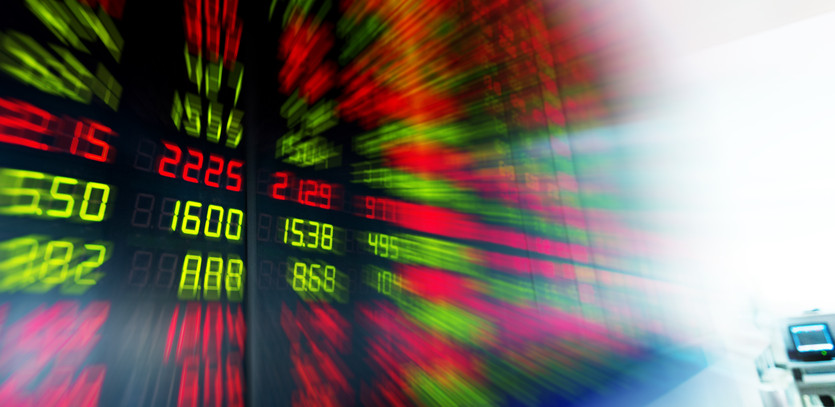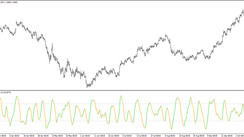Introduction: An In-Depth Exploration of Price Discovery
Price discovery is far more than a mere transaction; it's the complex and nuanced negotiation arena where starting market prices are carefully refined until they culminate in a transaction value. This price is unique for a specific quantity, time, and place of a product or asset. From the charming hustle and bustle of local farmers' markets to the glamorous world of art auctions, the high-powered intensity of stock exchanges, the shrewd negotiations at a car dealership, and even in the cutting-edge space of digital trade, the concept of price discovery prevails.
What's fascinating is that price discovery is the heartbeat of global exchanges like Nasdaq and the New York Stock Exchange (NYSE). It orchestrates the interaction between buyers and sellers in various markets. In this comprehensive guide, we'll uncover the elaborate and intricate workings of the price-discovery process and the various influences swaying buyers and sellers in financial markets.
Definition and Real-World Example of Price Discovery: A Closer Look
In the realm of finance, price discovery is an elegant and complex dance, weaving together various players in the markets, including stocks, bonds, commodities, and derivatives. This dance takes place primarily on exchanges, which serve as grand stages for the ceaseless interaction of buyers and sellers.
Exchanges: The Auction Markets
Exchanges are not just platforms; they are vibrant auction markets where numerous transactions occur simultaneously, reflecting the ongoing competitive bids by various participants. These are the nerve centers where the pulse of global economics can be felt.
Here's what makes exchanges extraordinary:
- Continuous Updates: A hallmark of the exchange process, the continuous update of prices for each listed item, resonates with the dynamism and fluidity of market forces. Prices fluctuate according to demand, supply, and unforeseen market influences.
- Accessibility: From the largest investment firms to individual investors, exchanges accommodate a diverse clientele, reflecting the democratization of finance.
- Transparency: With clear guidelines and regulated processes, exchanges ensure an even playing field, promoting trust and reliability.
Example: The XYZ Company Quote
Imagine you're an investor interested in buying or selling 100 shares of a company named XYZ. The scenario on the exchange might unfold as follows:
| XYZ Company | |||
| Last | Change | %Change | Volume |
| 123.80 | 0.22 | 0.18 | 525,000 |
| Trade Size | Bid/Ask | Bid/Ask Size | Previous Price |
| 200 | 123.87/.92 | 2 x 3 | 123.65 |
| Open | High | Low | 52-Week High |
| 123.72 | 124.2 | 123 | 125 |
This table is far from being just a static snapshot; it's a living painting of market forces at work. Here's what each part signifies:
- Bid and Ask: The bid symbolizes the zenith of what buyers are ready to pay, while the ask is the nadir that sellers will consider. These figures are the essence of negotiation and agreement, leading to eventual transactions.
- Last and Trade Size: These depict the most recent transaction's price and the number of shares exchanged. They're essential markers for understanding current market activity.
- Highs and Lows: These figures resonate with the ebb and flow of market dynamics, portraying the story of the stock in the short and long term.
Note: The exchange quotes are like the verses of an economic symphony, portraying the real-time dance of the price-discovery process. This is more than just numbers; it's the rhythm of markets, fair, efficient, and transparent.
How Price Discovery Functions: The Dynamics and Influences
Price Determination: The Heart of the Market
Price determination is a captivating interplay of the universal forces of supply and demand, which choreograph the market's price levels. For instance, in bullish markets, the positivity of a robust economy coupled with favorable investor sentiment propels prices higher across the board. In contrast, bear markets, characterized by a lagging economy and pessimistic investor sentiment, exert a downward pressure on prices.
The equilibrium of buyers and sellers in the market wields the most substantial influence on price. If buyers are fervent in their bidding, sellers will correspondingly elevate the price. Should buyers cool down, sellers will in turn cut the price. This perpetual dance between these market forces is encapsulated in the resistance and support price levels, painting a rich picture of market dynamics.
Information: The Catalyst of Change
Every day, financial news outlets unravel events that steer the markets in various directions. Investors respond in real time, buying or selling in response to a multitude of influences such as Federal Reserve decisions, economic indicators, political developments, and company-specific news. This constant influx of information feeds into the market's rhythm, influencing price discovery across sectors.
Liquidity: The Fluidity of Markets
Market makers—those high-volume traders who quite literally "create a market" for securities by being on standby to buy or sell—engage in transactions at the bid/ask prices they display on the exchange. Typically, the difference between these bid/ask prices, known as the spread, is incredibly narrow. However, when markets become stormy, or if there's a lack of ready interest in a particular security, this spread will expand, and the price-discovery process may elongate, adding an additional layer of complexity and intrigue.
Price Discovery and Book Building: An Elegant Dance
When private companies decide to venture into the public domain through an initial public offering (IPO), they often solicit the expertise of an investment bank to navigate the uncharted waters. The bank's task is to buy all the shares at a mutually agreed-upon price, gauging what the market will pay for the fresh stock.
Note: Here, investment banks employ a sophisticated practice called book building to unlock price discovery. This method involves canvassing demand during promotional “roadshows,” predominantly targeting institutional investors. It's an artful blending of market acumen and human interaction.
These early indications from potential investors become a vital component in the price discovery for the new shares, sculpting the final offering price.
What It Means for Individual Investors: Fairness, Opportunity, and Risk
The price discovery process on financial exchanges aims to equip all investors with the same data at the same instant, crafting a landscape of fair and orderly markets. The U.S. Securities and Exchange Commission (SEC) plays the role of regulator, watching over exchanges and other market participants to safeguard individual investors.
Yet, it's vital to recognize that while price discovery on exchanges promotes fair pricing, it doesn't necessarily mirror the genuine value of a particular security. Investors must approach the market with discernment, recognizing that price and value are not always synonymous.
Key Takeaways: The Essence of Price Discovery
- Price discovery is the intricate bridge that enables buyers and sellers to concur on a price, culminating in a transaction.
- This process permeates every conceivable market, including the rapidly evolving online platforms.
- Price determination is the rudder steering general price directions.
- Through auctions and exchanges, financial markets bring to life their unique price-discovery mechanisms, painting a complex and vibrant picture of global commerce.





